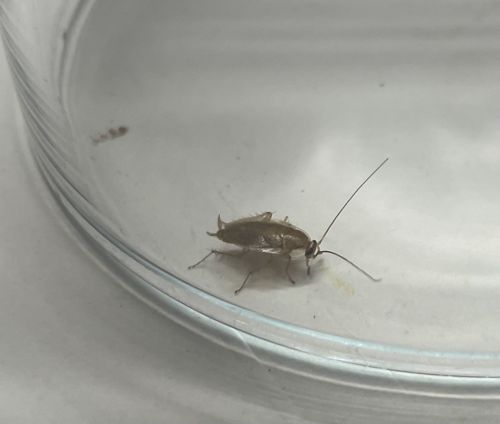German Cockroach
Scientific Name: Blattella germanica
Order & Family: Blattodea, Ectobiidae (formerly Blattellidae)
Size: Typically 1.1 to 1.6 cm (0.43 to 0.63 inches) in length.

Natural Habitat
Primarily indoor environments, preferring warm, humid places close to food and water sources, such as kitchens, bathrooms, and food preparation areas. They can also be found in commercial establishments like restaurants, hospitals, and grocery stores.
Diet & Feeding
Omnivorous scavengers, feeding on almost anything, including food scraps, grease, pet food, crumbs, and even non-food items like soap, glue, and toothpaste.
Behavior Patterns
Nocturnal, hiding in cracks and crevices during the day. They are excellent at hiding and can quickly infest an area due to their rapid reproduction rate. Females carry an ootheca (egg case) containing multiple eggs. They are highly adaptable and can survive in many environments.
Risks & Benefits
Risks: German cockroaches are considered significant pests. They can spread bacteria, pathogens, and allergens, exacerbating asthma and allergies, especially in children. They contaminate food and surfaces, leading to food poisoning and other illnesses. They also produce an unpleasant odor and can be a nuisance. Benefits: None known in an urban indoor environment; they are considered a pest.
Identified on: 8/24/2025